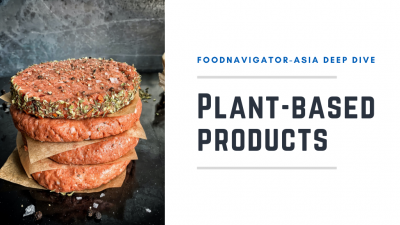Vigilance vital: Australian researchers warn against complacency as child food allergies dip

The national study was led by the John James Medical Centre and the Murdoch Children’s Research Institute (MCRI) and published in the Journal of Allergy and Clinical Immunology. It examined a total of 37,132 food anaphylaxis hospital admissions via national emergency department data across the three time periods of 1998-1999 to 2006-2007, 2007-2008 to 2014-2015, and 2015-2016 to 2018-2019, based on several age groups.
Researchers aimed to examine the impacts of implementing allergy prevention guidelines on a national (implemented in 2007-2008) and global (implemented in 2015-2016), particularly to determine whether these had resulted in any parallel reductions in hospital admissions due to food anaphylaxis.
One of the major guideline changes highlighted was that of introducing allergens to infant diets before the age of one, before the child develops the allergy, in order to prevent this from developing – this was because the results showed a slowing in food anaphylaxis rates amongst children aged between one and 14 years of age.
“The results [for these age groups] coincide with the introduction of updated infant feeding and allergy prevention guidelines in 2007-2008 and 2015-2016,” MCRI Professor Mimi Tang said.
“This study is the first real-world evidence to show that updates to allergy prevention and infant feeding guidelines are having a measurable impact on the population prevalence of food anaphylaxis.”
Children in the one to four-year-old age group showed a 13.7% slow in annual anaphylaxis rates of increase across the three time periods from 17.6% to 6.2% to 3.9%; those in the five to nine-year-old group dropped even more by 24.4% from 22% to 13.9% to –2.4%; and those in the 10 to 14-year-old group dropped 6.7% overall from 17.5% to 18.0% to 10.8%.
Notably, these changes were not seen in older teenagers aged above 15 years, who could not have been able to experience the impacts of the evolving guideline measures.
That said, Prof Tang emphasised that despite the good news, now is definitely not the time for consumers and especially parents to be complacent about food allergies.
“It’s a positive sign that changes to Australasian guidelines have led to earlier introduction of common allergy causing foods and that most parents have access to this reliable advice,” she added.
“But even if this early introduction of common allergy causing foods partially reduces the risk of food allergy development, there will still be children who develop food allergy and many children and adults already have food allergy, so we need to also work towards finding effective treatments.
“[It should also be noted] that the study found positive results for children [between one and 14 years], but there was still a disappointing absence of an absolute drop in anaphylaxis admissions [for the general population].”
She noted that other environmental factors such as infections, diet and vitamin D levels could also be causes for the increased admission rates.
It is also important to note that the introduction of allergy causing foods needs to be done before the child has developed the allergy, and definitely not when it has already developed.
“When a child has already developed a food allergy, better allergy label usage, and parents reading these labels properly, is really important to protect them,” MCRI’s A/Prof Jennifer Koplin told us previously.
Australia has also changed guidelines that previously recommended the use of hydrolysed infant formula for babies in order to prevent related allergies.
Young infants
Despite the positive results for most children age groups, infants below the age of one year saw a significant 12.8% spike in anaphylaxis admission rates across the three time periods, from 5.2% to 8.0% to 18.0%.
But though this may appear concerning, lead researcher Dr Raymond Mullins highlighted that this could be due to food allergies that existed even in the womb, and might or might not be related to guideline changes.
“Whilst we did see a spike in children aged less than one year, this is most likely due to earlier hospital presentations of pre-existing food allergy following introduction of allergenic solids in the first year of life,” he said.
Study: Changes in Australian food anaphylaxis admission rates following introduction of updated allergy prevention guidelines
Source: The Journal of Allergy and Clinical Immunology
Authors: Mullins, R. J., et. al.






















